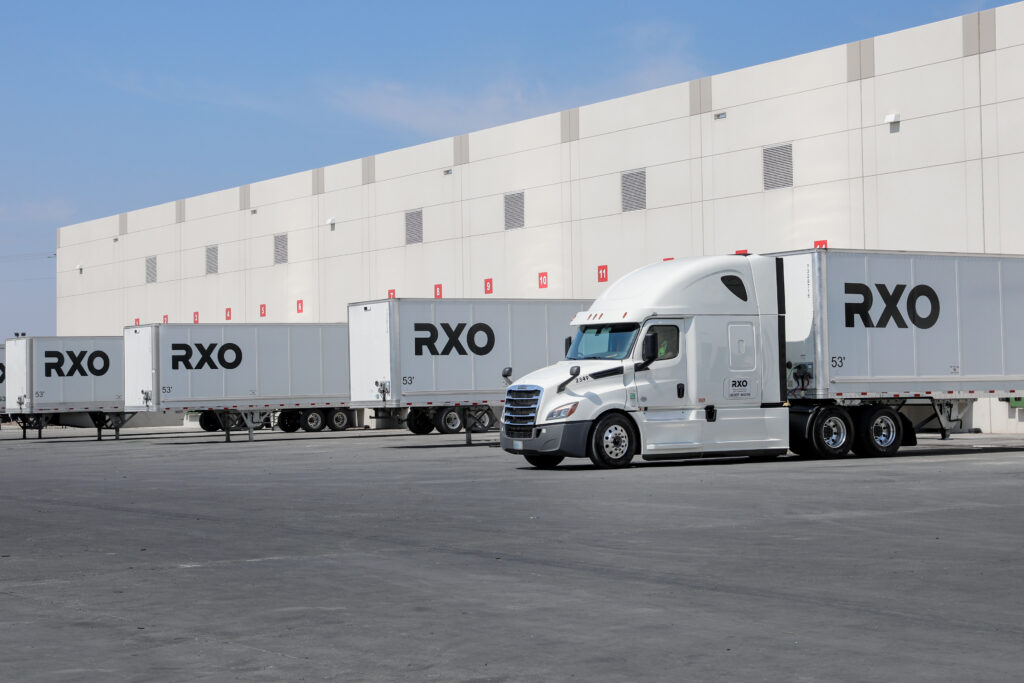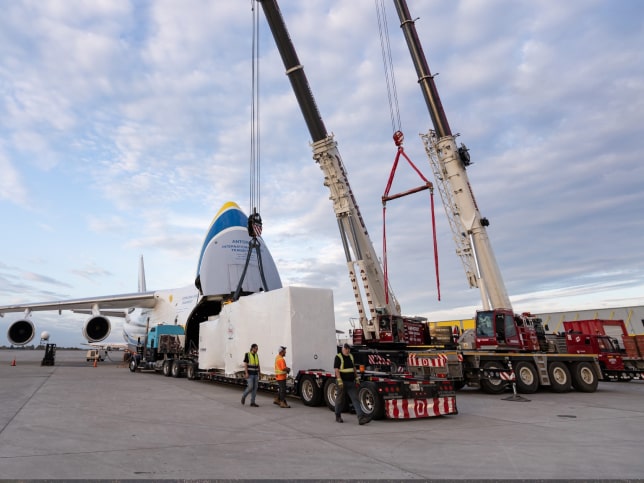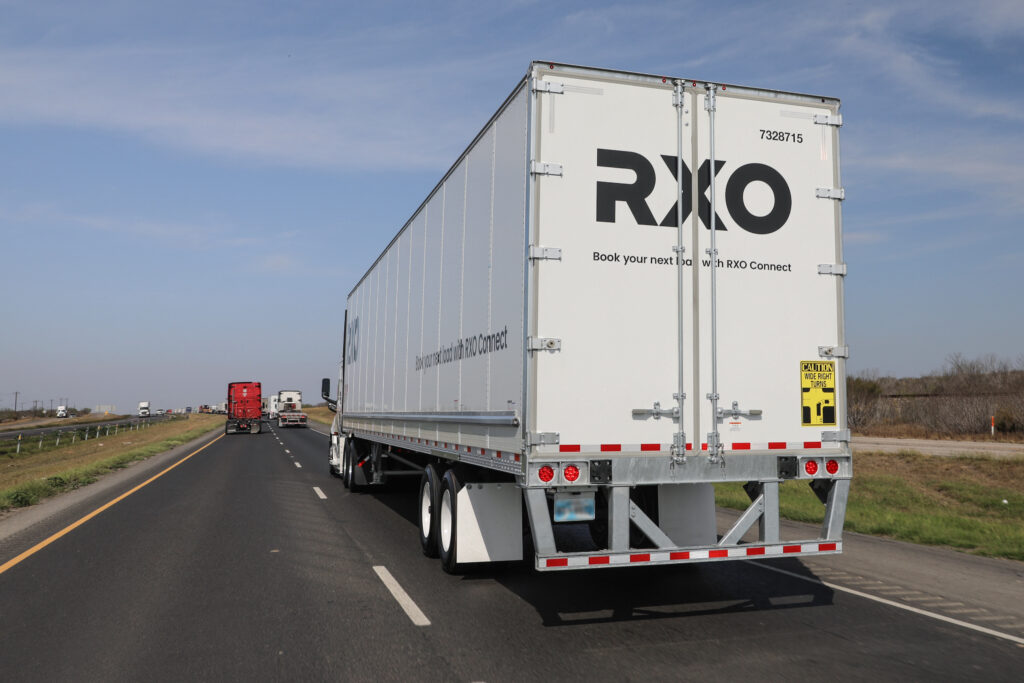This managed transportation case study involves a multinational automotive manufacturing corporation as a client. The OEM is one of the largest automakers in the world and produces a variety of well-known vehicle brands. After working with the same logistics company for over 20 years, this North American OEM began searching for a new logistics partner that could offer a wider range of benefits. The company needed a suite of solutions, including full-network visibility, cost-saving opportunities and increased carrier capacity.
In 2021, the OEM selected RXO as their provider for a complete managed transportation solution. Based on RXO’s stellar performance as a third-party logistics provider for the OEM’s subsidiary accessory seller, the OEM was confident that RXO would meet their operational needs. With an entrepreneurial mindset and a pioneering spirit, RXO began working to create an effective, scalable strategy.
By the Numbers
11%
Year-Over-Year Savings
7%
Improvement to On-Time Delivery Rate Resulting in 98.5% On-Time Performance
9
Bids Per Shipment on Average
$14.4 Million
Competitive Bid Process Resulting in $14.4 Million in Savings
Filling a Logistics Strategy Vacancy
Prior to the launch of the partnership between the North American OEM and RXO, the automotive company’s incumbent solution provider departed the business early. This left the automotive corporation without a service provider and without an up-to-date logistics strategy. Additionally, the company and their service provider had accumulated years of institutional knowledge together that was never documented.
To fill this gap, RXO implemented a staggered launch of its managed transportation solution earlier than planned. Operations began in the United States and Canada before moving on to Mexico. Manufacturing plants and assembly centers were launched in phases. Because the implementation plan was changed drastically due to the early launch, RXO leveraged its other business units to help the OEM transition into the new strategy. Teams from internal groups including brokerage, air charter and freight forwarding shifted their focus to the manufacturer, coming together under RXO’s value of “Success Together.”
RXO’s governance model ensures that all stakeholders are informed on the status of any RXO operational strategies during implementation. The company chose key performance indicators (KPIs) that gave useful insights into the logistics operations. Daily operations meetings were held to give front-line leaders an opportunity to review the tactical work that needed to take place immediately. In addition, during the first three months of the partnership, RXO held executive-level meetings twice per week to understand the intricacies of the business and prepare a successful launch.
This communication approach supported seamless collaboration across regions and time zones and guaranteed that everyone on the RXO team was working toward the same goal. After this initial 100-day launch, the program was performing well enough to transition to standard management patterns.
Responding to Supply Chain Disruptions
In Q1 of 2022, shortly after the launch of RXO’s operations with the OEM, two unprecedented supply chain disruptions occurred that caused capacity issues across the industry. Fortunately, with RXO’s agile approach, the company found solutions quickly to keep the OEM’s supply chain running smoothly.
The first roadblock occurred in February 2022 when the flow of material was disrupted at the U.S.-Canada border due to a trucker strike and blockade. To avoid this blockade, RXO ran cargo vans through the Detroit Windsor tunnel, rather than using the Blue Water Bridge or the Ambassador Bridge, which were directly affected by the strike.
In March 2022, a similar event occurred at the U.S.-Mexico border. In response to this obstacle, RXO secured air charter capacity to bring stability to the flow of critical material out of Mexico to U.S. assembly plants. RXO’s freight forwarding team leveraged the company’s cross-dock location in Laredo, TX to mitigate the impact of the congestion at the border.



Improving Cross-Border Operations
Based on observations made during the initial launch phase, RXO identified that the OEM needed more capacity than originally estimated. To meet the high cross-border volume needs of the manufacturer, RXO revamped its RXO Laredo facility and established additional integration points. New carrier strategies improved border processing time by 18 hours for B1 drivers. System enhancements were implemented that automated processes and communication.
RXO used propriety technology solutions to manage border operations while giving the automotive company in-depth visibility. With yard management and warehouse management software, RXO stabilized the manufacturer’s cross-border activity. After implementing this technology, stakeholders were able to see activity from the shipping yard to the dock and beyond.
The company also needed a robust system for cross-border payments and visibility. RXO instituted shipment tracking processes that were integrated with warehouses at the border. Additionally, RXO built APIs to move information seamlessly between platforms. Because each side of the U.S-Mexico border has different rules and customs for bids, freight and transloading, as well as different currencies, RXO needed to carefully customize a solution to make the border process smooth and easy.



Implementing an Air Charter Program
When the North American OEM’s air charter volume grew far beyond the original plan – 2 to 3 times beyond the estimate – RXO developed a more hands-on process. RXO built a specialized team with air charter expertise to heavily focus on the manufacturer’s operations. Amid a major volume spike over original estimates, RXO worked to create structure and standardize internal processes. RXO’s changes, including implementing standard work instructions (SWIs) and standard operating procedures (SOPs), resulted in the stabilization and optimization of the automotive company’s air charter transportation. This structure supported continuous improvement activities related to air charter capacity and cost.
Results
At RXO, a successful implementation is just the first step. RXO produces leading results for customers by creating long-term solutions that continuously provide value to the client. RXO works with this client to make constant improvements to the their logistics strategy.
In the first year of partnering with the OEM, RXO substantially improved upon areas where operations were struggling. RXO created a set of KPIs, applied them across all locations and used Power BI data visualization to provide helpful information to the company’s leadership. With these KPIs, RXO investigated the root causes of the operational problems and challenges. From there, the logistics provider worked alongside trading partners, suppliers and customers to create fixes and drive improvements. On-time delivery performance improved 7% from the beginning to the end of 2022, and all other metrics improved substantially.
At the quarterly business review in spring of 2023, the OEM and RXO confirmed savings of $11 million over the prior year for the company on ongoing continuous improvement projects. The number of bids per shipment grew from 4.5 to 9, resulting in much better carrier capacity and cost. RXO will next help the OEM to increase capacity of B1 drivers – drivers licensed to deliver from Mexico directly into the United States, reducing border crossing time and avoiding the added cost of charter services.
RXO managed transportation programs are never finished. As a transportation partner, RXO continues to pursue optimization and improvement over the life of the account. Moving forward with the automotive company, RXO is focusing on talent management and using experts across the organization to support deeper program development. By working with core values in mind, RXO was able to guide this customer through an eventful first year, resulting in greater visibility, performance and cost management.


